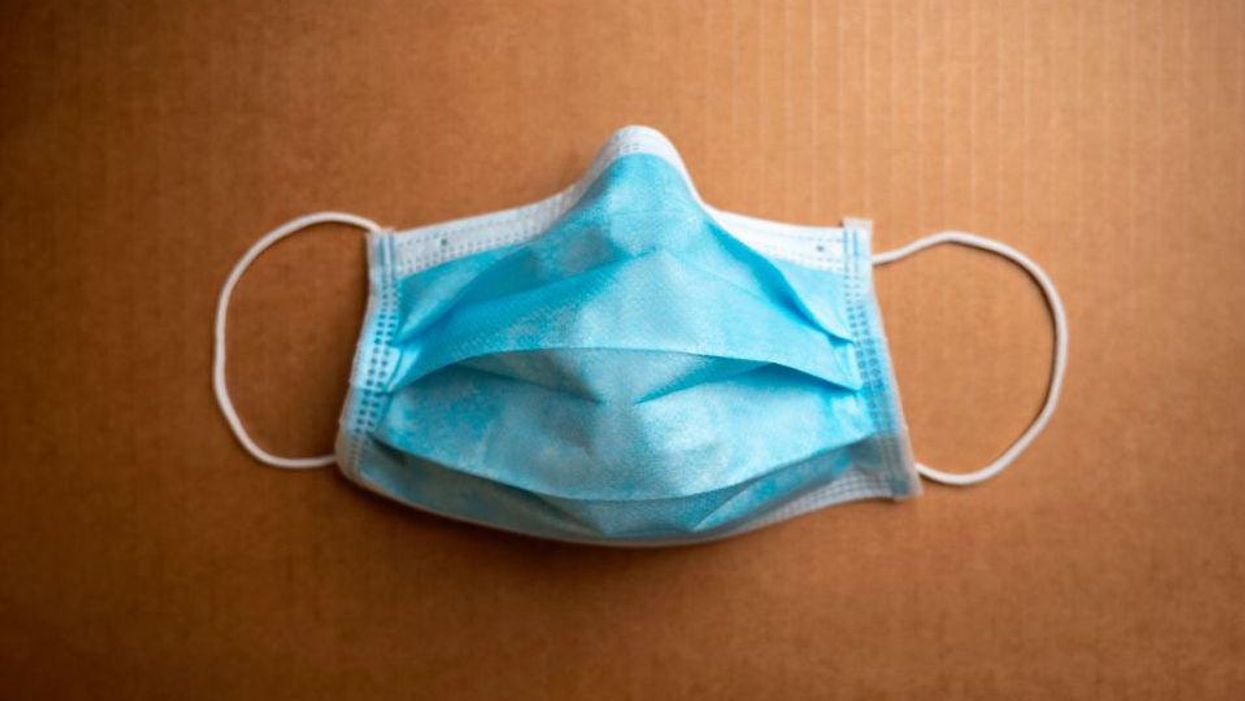
LIONEL BONAVENTURE/AFP via Getty Images

Exactly what gets collected on your face mask after hours of use? Many medical experts have claimed there are no health drawbacks to wearing face masks for long periods of time, as long as you regularly clean them or use a new covering each time you mask up.
But Florida parents, who are concerned about children wearing face masks at school, discovered recently that face masks actually catch a host of bacteria, many of which are "dangerous pathogens."
The Gainesville parents sent six recently worn face masks to the University of Florida for laboratory testing. They discovered that face masks collect numerous bacteria that cause, in many cases, serious illnesses.
The parents wanted the face masks tested "because they were concerned about the potential of contaminants on masks that their children were forced to wear all day at school, taking them on and off, setting them on various surfaces, wearing them in the bathroom, etc.," Rational Ground explained.
"We need to know what we are putting on the faces of our children each day. Masks provide a warm, moist environment for bacteria to grow," parent Amanda Donoho told Rational Ground.
The tests, conducted by the University of Florida's Mass Spectrometry Research and Education Center, discovered that five of the six masks contained a host of bacteria and three of the masks were contaminated with "dangerous pathogenic and pneumonia-causing bacteria."
The 11 "dangerous pathogens" found on the masks are responsible for illnesses that include:
More from Rational Ground:
Half of the masks were contaminated with one or more strains of pneumonia-causing bacteria. One-third were contaminated with one or more strains of meningitis-causing bacteria. One-third were contaminated with dangerous, antibiotic-resistant bacterial pathogens. In addition, less dangerous pathogens were identified, including pathogens that can cause fever, ulcers, acne, yeast infections, strep throat, periodontal disease, Rocky Mountain Spotted Fever, and more.
The tested masks were new or had been freshly washed. They were worn by children ages 6-11 attending in-person school, while one was worn by an adult. Unworn masks and a T-shirt worn by one of the children were used as controls.
"No pathogens were found on the control," Rational Ground noted.
Dr. Patrick Grant, a microbiologist at Florida Atlantic University, said last year that unwashed face masks do, indeed, accumulate harmful bacteria.
"It's very common that we will eat and then put our mask back on and if we are sweating a little we are creating a really nice soup for this bacteria," Grant said.
However, infectious disease specialist, Dr. Rossana Rosa, said the risk of pneumonia transmission, for example, due to accumulated infected particles on a face mask is nonexistent.
"The way bacterial pneumonia tends to develop is through aspirating — or breathing in — contents into the lungs. So, in terms of wearing a mask, the respiratory droplets you exhale that land on the inside of your mask that you then breath [sic] back in will not give you bacterial pneumonia," Rosa explained. "If you have phlegm, you should find a way to safely spit it out. That way you aren't at risk of breathing in large amounts of mucus or saliva into your lungs, which is how bacterial pneumonia develops."
What is less clear, as the concerned Florida parents indicated, is the transmission risk when school children are taking off and putting on their face masks multiple times per school day to eat and drink. With the accumulation of harmful bacteria, the chances of falling sick would theoretically increase.
The Centers for Disease Control and Prevention's latest guidance recommended that students continue wearing face masks through the 2020-21 school year.